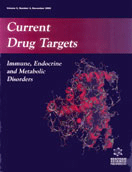Abstract
Mitochondrial trifunctional protein (MTP) is a complex protein that catalyzes the last three steps of long chain fatty acid oxidation. MTP defects have emerged recently as important inborn errors of metabolism because of their clinical implications. These disorders are recessively inherited and display a spectrum of clinical phenotypes in affected children including hepatic dysfunction, cardiomyopathy, neuro-myopathy, and may cause sudden unexpected infant death if undiagnosed and untreated. Interestingly, mothers who carry fetuses with MTP defects develop life-threatening complications during pregnancy. Recently, we delineated disease-causing mutations in MTP and reported the molecular basis for the pediatric and fetal-maternal genotype-phenotype correlations. Current management of patients with MTP defects include long-term dietary therapy of fasting avoidance, low fat diet with the restriction of long chain fatty acid intake and substitution with medium chain fatty acids. The long-term outcome of patients treated by dietary modifications remains unknown. Thus, treatment that aims at correcting the metabolic defect remains the therapy of choice for this disorder. Currently, we are exploring the potential use of protein transfection domains (PTD) for treatment of these disorders. We have shown that the transactivator of transcription (TAT) peptide from the human immunodeficiency virus can deliver proteins to mitochondria. We have further developed methods to localize these proteins to mitochondria by including a mitochondrial targeting in the fusion protein construct. Finally, we have shown that the fusion protein can cross the placenta and was detectable in the fetus and newborn pups. The practical therapeutic implications of this novel approach will be discussed.
Keywords: eatty acids, oxidation, mitochondrial trifunctional protein, lchad
 3
3


















